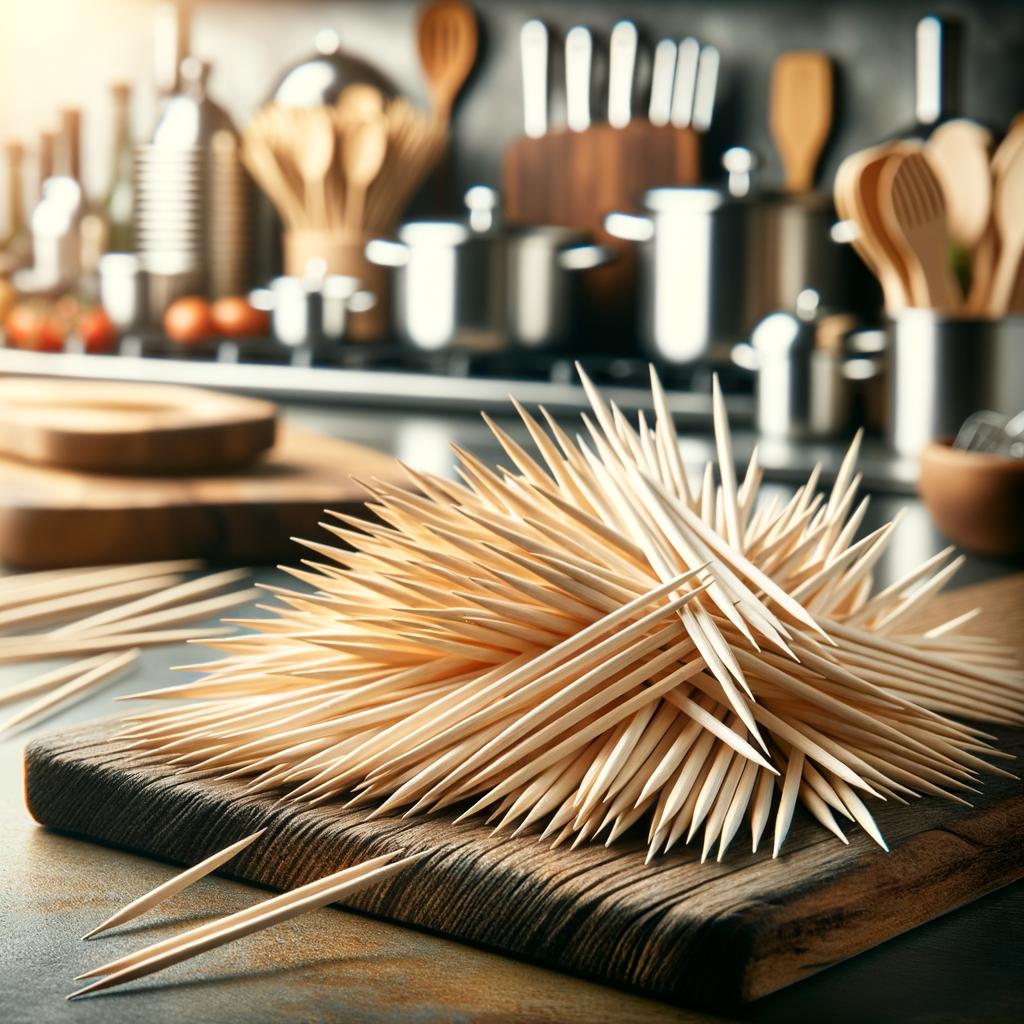Toothpicks

Description Toothpicks, those slender, pointed sticks of wood, plastic, or even metal, are a common sight in kitchens and dining tables worldwide. Their appearance is simple yet elegant - a slender, straight form tapering to a pointed end, often with intricate designs or patterns on the non-pointed end. Their texture is smooth, designed to glide effortlessly between teeth without causing discomfort. While toothpicks themselves do not have a flavor, they can carry the essence of the food they're used to pick, often enhancing the gastronomical experience. What sets toothpicks apart from similar tools is their versatility - they are used not only for dental hygiene but also in cooking and craftwork.
Primary Uses Toothpicks are primarily used to remove food debris from between teeth, but their use in the culinary world is vast and varied. They are indispensable in holding together sandwiches or burgers, testing the doneness of baked goods, serving small appetizers or hors d'oeuvres, and even in creating intricate food art. In certain cultures, toothpicks are used as a key component in traditional dishes, like in Spain where they are used to hold together tapas. Beyond the culinary world, toothpicks have found uses in craftwork, model building, and even as a tool for cleaning small, hard-to-reach areas.
History The use of toothpicks dates back to prehistoric times, with evidence of their use found in the remains of early humans. Over the centuries, toothpicks have evolved from simple twigs to the finely crafted tools we see today. In the Victorian era, owning a gold or silver toothpick was a status symbol. There are many stories associated with toothpicks, including one about an American named Charles Forster who, in the late 19th century, started the first toothpick manufacturing company after seeing locals in Brazil using slender pieces of wood to clean their teeth.
Nutritional Information While toothpicks themselves do not have nutritional value, they play a crucial role in maintaining oral health. By removing food debris, they prevent the buildup of plaque and the subsequent development of cavities and gum disease. They are a non-caloric, non-fat, and sugar-free addition to any meal, making them a perfect tool for those conscious about their diet. Compared to other dental tools, toothpicks are portable and discreet, making them a popular choice for maintaining oral hygiene on the go. However, caution must be exercised while using toothpicks to avoid gum injury.

